Introduction to Lasagne Garlic Bread
Lasagne garlic bread is a delightful culinary combination that has become a staple in many households. This dish not only complements lasagne but also serves as a standalone treat that tantalizes taste buds. The rich flavors of the garlic, combined with the soft texture of the bread, create a perfect contrast to the hearty nature of lasagne. When you serve lasagne garlic bread alongside your favorite pasta dish, you offer a satisfying meal that everyone will love. Additionally, this dish is relatively easy to prepare, making it an excellent choice for busy weeknights or special occasions.
Incorporating lasagne garlic bread into your meal plan can also enhance the overall dining experience. The aroma of freshly baked garlic bread wafting through your kitchen is hard to resist. Furthermore, it provides a warm and comforting element to any dinner table. Whether you are hosting a gathering or enjoying a quiet evening at home, lasagne garlic bread is sure to impress your guests or family members.
Ingredients for Perfect Lasagne Garlic Bread
To create the ultimate lasagnes garlic bread, you will need a few essential ingredients. First, consider the type of bread you want to use. A French baguette or Italian ciabatta works well due to its texture and ability to absorb flavors. Creating the ultimate lasagne garlic bread starts with the right ingredients. Here’s what you’ll need:
- Unsalted butter: for spreading and richness.
- Fresh garlic: minced or crushed for the best flavor.
- Fresh parsley: chopped, adding a vibrant color and freshness.
- Parmesan cheese: grated, for a savory touch.
- Olive oil: enhances the richness and flavor.
- Salt and pepper: to taste.
Each of these ingredients plays an important role in creating a delicious lasagnes garlic bread. The combination of butter and garlic serves as the foundation, while the parsley and cheese elevate the flavors. To achieve the best results, use fresh ingredients whenever possible. This way, you will ensure that your lasagne garlic bread not only tastes good but also looks appealing on your dinner table.
The secret to exceptional lasagne garlic bread lies in the freshness of its ingredients. Pairing these with a flavorful lasagne recipe ensures a meal that’s both delicious and unforgettable.
Step-by-Step Recipe for Lasagne Garlic Bread
Creating lasagnes garlic bread is a straightforward process. Follow these easy steps to make your own version:
- Preheat your oven to 375°F (190°C). This step is crucial for achieving a perfectly baked garlic bread.
- Prepare the garlic butter: In a small bowl, mix together softened unsalted butter, minced garlic, chopped parsley, grated Parmesan cheese, olive oil, salt, and pepper. Ensure that all ingredients are well combined.
- Slice the bread: Take your chosen bread and slice it in half lengthwise. This will allow the garlic butter mixture to penetrate the bread effectively.
- Spread the garlic butter evenly on both halves of the bread. Be generous, as this will enhance the flavor.
- Wrap the bread in aluminum foil, placing it on a baking sheet. This will help retain moisture while baking.
- Bake the wrapped bread in the preheated oven for about 10-15 minutes. After this time, remove the foil and bake for an additional 5 minutes to achieve a golden crust.
- Serve warm alongside your lasagne. Cut into slices and enjoy the delightful combination of flavors.
Following these steps will result in a delicious lasagnes garlic bread that pairs beautifully with your meal. Remember that presentation matters, so consider garnishing with additional parsley for a pop of color.
For more tips on enhancing your garlic bread, check out this guide to perfect bread accompaniments, which includes ideas for creating unique flavors.
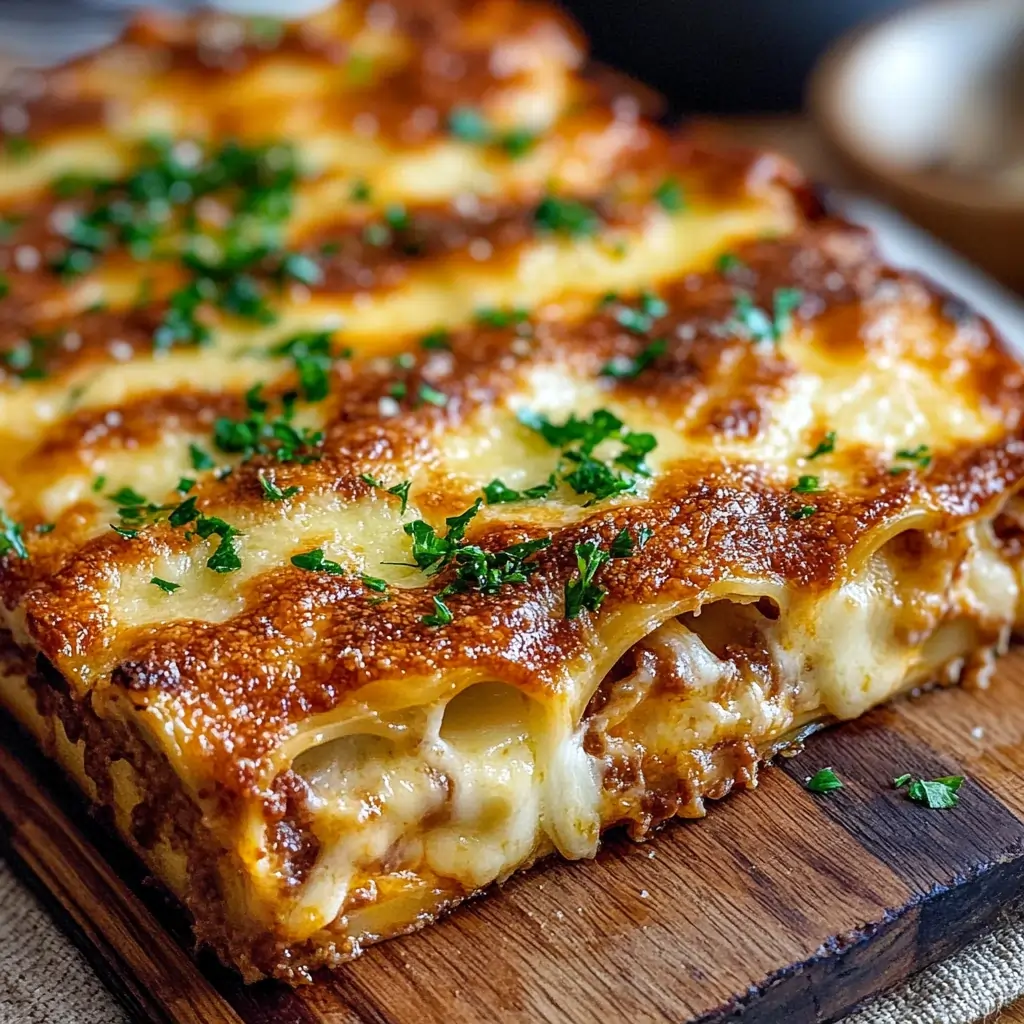
Tips and Tricks for Best Results
To ensure that your lasagne garlic bread turns out perfectly every time, consider the following tips:
- Use high-quality ingredients: Fresh garlic and good-quality butter make a significant difference in flavor.
- Don’t skimp on the garlic: If you love garlic, feel free to add more than the recipe suggests.
Lasagne, the beloved Italian dish, has long been a staple in households around the world. But what if we could take this classic comfort food and elevate it with the addition of lasagnes garlic bread? This fusion of two beloved culinary creations promises to delight the senses and transport your taste buds on a delectable journey.
In this comprehensive guide, we will explore the art of crafting the perfect lasagne garlic bread, delving into the essential ingredients, step-by-step instructions, and expert tips and tricks to ensure your creation is nothing short of extraordinary. Whether you’re a seasoned home chef or a novice in the kitchen, this article will equip you with the knowledge and confidence to master this mouthwatering dish.
Ingredients for Perfect Lasagne Garlic Bread
Preparing the lasagne garlic bread requires a carefully curated selection of ingredients that work in harmony to create a flavor profile that is simply irresistible. Here’s what you’ll need:
- Lasagne noodles
- Ground beef or Italian sausage
- Onion, garlic, and tomato sauce for the lasagne garlic bread filling
- Ricotta, mozzarella, and Parmesan cheeses
- Butter, garlic, and parsley for the lasagne garlic bread topping
- Salt, pepper, and other seasonings to taste
By carefully selecting and combining these ingredients, you’ll be well on your way to creating a lasagnes garlic bread that will leave your family and guests craving more.
Step-by-Step Recipe for Lasagne Garlic Bread
Now that we’ve covered the essential ingredients, let’s dive into the step-by-step process of bringing this lasagne garlic bread masterpiece to life:
- Preheat the Oven
Preheat your oven to 375°F (190°C) to ensure it reaches the right temperature for baking. - Cook the Noodles
Cook the lasagne noodles according to the package instructions. Once cooked, drain them and set aside for later use. - Brown the Meat
In a large skillet, brown the ground beef or Italian sausage over medium heat. Make sure to drain any excess fat to avoid a greasy dish. - Sauté the Aromatics
Add the diced onion and minced garlic to the skillet. Sauté until the onion is translucent, releasing its fragrant aroma. - Add the Sauce
Stir in the tomato sauce, along with salt, pepper, and any other desired seasonings. Let it simmer for a few minutes to meld the flavors. - Mix the Cheese
In a separate bowl, mix together the ricotta, half of the mozzarella, and Parmesan cheeses until well combined. - Layer the Ingredients
Spread a thin layer of the meat sauce in the bottom of a 9×13-inch baking dish to prevent sticking. - Build the Layers
Layer the cooked lasagne noodles, followed by the cheese mixture, and then the remaining meat sauce. Repeat this layering process until all the ingredients are used up. - Top with Cheese
Finish by topping the lasagne with the remaining mozzarella cheese, ensuring a gooey, cheesy finish. - Prepare Garlic Butter
In a small bowl, melt the butter and mix in the minced garlic and chopped parsley. This will add a rich flavor to the top. - Spread Garlic Butter
Spread the garlic butter mixture evenly over the top of the lasagne garlic bread to enhance its flavor. - Bake
Bake the lasagne garlic bread for 30-40 minutes, or until the cheese is melted and bubbly, creating a golden crust. - Cool Before Serving
Allow the lasagne garlic bread to cool for 10-15 minutes before serving. This resting time helps the layers set.
By following these step-by-step instructions, you’ll be well on your way to creating a lasagne garlic bread that will impress your family and friends!
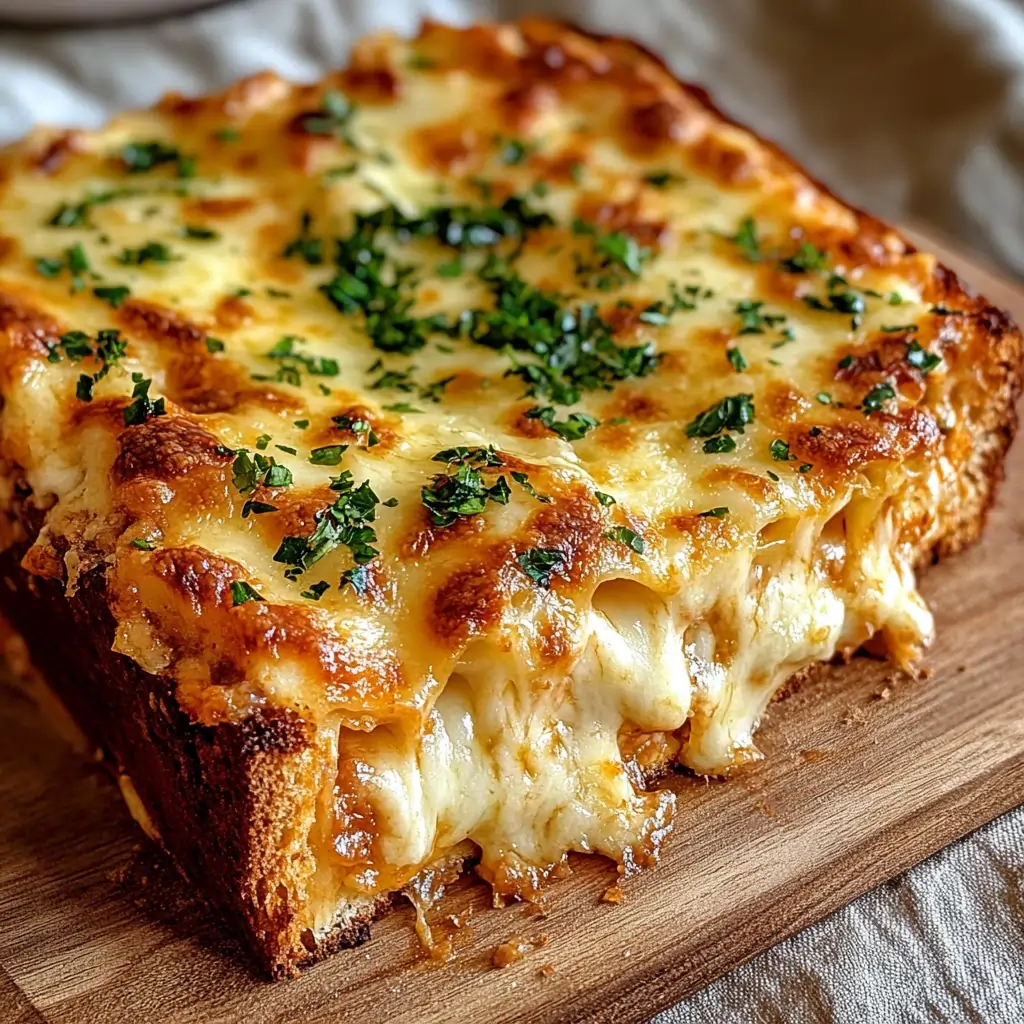
Tips and Tricks for Best Results
To ensure your lasagnes garlic bread turns out perfectly every time, consider these expert tips and tricks:
- Use freshly grated cheese for a creamier and more flavorful filling.
- Sauté the onions and garlic until they’re fragrant and caramelized for a deeper flavor.
- Adjust the seasoning to your personal taste preferences.
- Cover the baking dish with foil for the first 20 minutes of baking to prevent the top from browning too quickly.
- Let the lasagne garlic bread rest for 10-15 minutes before serving to allow the layers to set and the flavors to meld.
By incorporating these tips and tricks into your lasagne garlic bread preparation, you’ll be well on your way to creating a dish that’s truly worthy of the title “masterpiece.”
Health and Nutrition Considerations
While the lasagne garlic bread is undoubtedly a indulgent and satisfying dish, it’s important to consider the health and nutrition aspects as well. To make this dish a bit more nutritious, consider the following:
- Use lean ground beef or turkey to reduce the fat content.
- Incorporate more vegetables, such as spinach or zucchini, into the filling.
- Opt for whole-wheat or gluten-free lasagne noodles to increase the fiber content.
- Reduce the amount of cheese or use low-fat varieties to cut down on calories and saturated fat.
By making these simple adjustments, you can enjoy the delicious flavors of lasagne garlic bread while also prioritizing your health and well-being.
Variations and Customizations
The beauty of lasagne garlic bread lies in its versatility, allowing you to customize the dish to suit your personal preferences or dietary needs. Here are a few variations to consider:
- Vegetarian lasagne garlic bread: Replace the ground beef or sausage with sautéed mushrooms, bell peppers, and other vegetables.
- Spicy lasagne garlic bread: Add a pinch of red pepper flakes or a diced jalapeño to the meat sauce for a kick of heat.
- Seafood lasagne garlic bread: Substitute the ground meat with cooked shrimp, crab, or a combination of seafood.
- Pesto lasagne garlic bread: Swap the traditional tomato sauce for a flavorful pesto sauce.
Experiment with different flavor combinations and ingredient substitutions to find the lasagne garlic bread that perfectly suits your taste buds.
Common Mistakes and How to Avoid Them
While lasagne garlic bread may seem like a straightforward dish, there are a few common pitfalls to watch out for:
- Overcooking the noodles: Be sure to follow the package instructions and avoid letting the noodles become too soft or mushy.
- Dry or crumbly filling: Make sure to not overmix the cheese mixture, and be generous with the tomato sauce to keep the filling moist and cohesive.
- Uneven baking: Ensure the lasagne garlic bread is baked evenly by rotating the dish halfway through the cooking time.
- Soggy or burnt garlic bread topping: Keep a close eye on the garlic butter mixture and adjust the baking time as needed to achieve the perfect golden-brown crust.
By being mindful of these common pitfalls and following the tips and tricks outlined in this guide, you’ll be well on your way to creating a lasagne garlic bread that is nothing short of perfection.
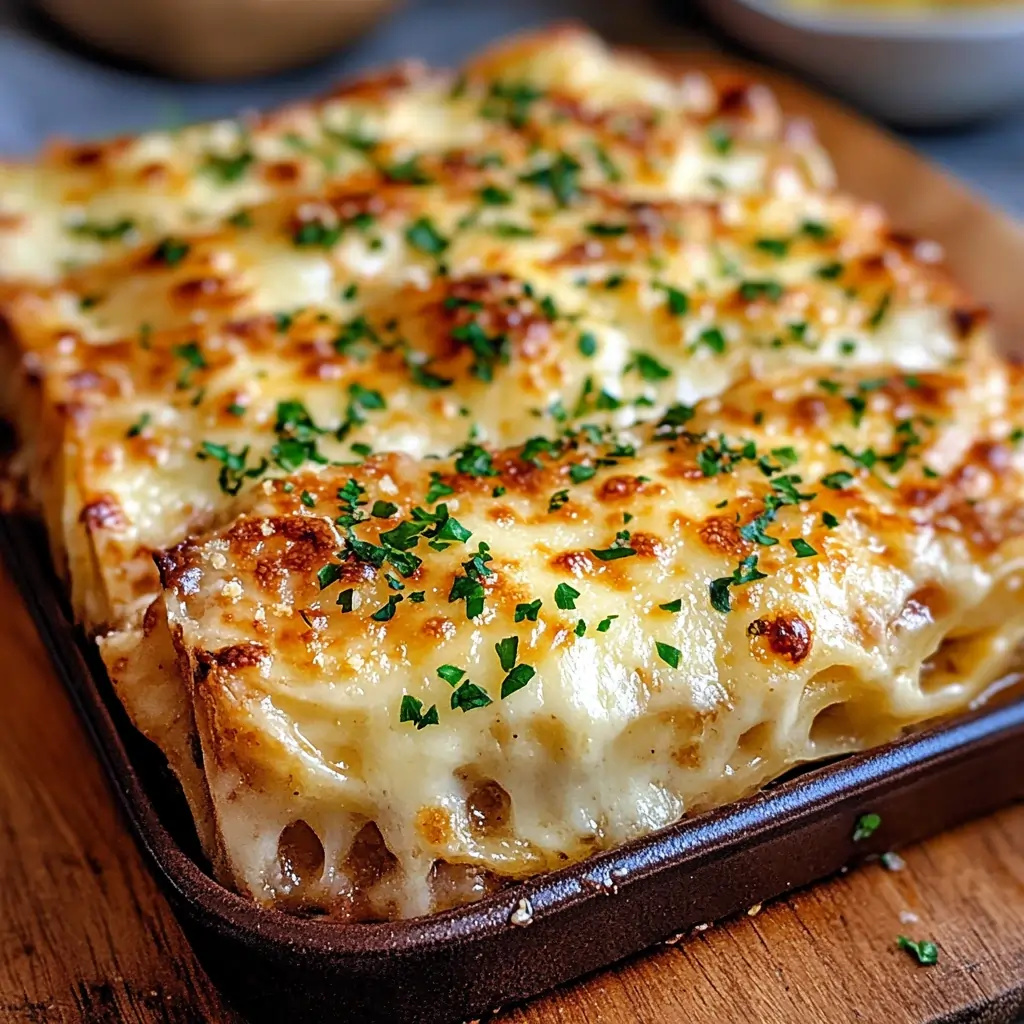
FAQ’s
Do Italians eat lasagna with garlic bread?
Italians typically do not serve lasagna with garlic bread as a traditional pairing. Instead, they often enjoy lasagna as a standalone dish, accompanied by a simple salad or vegetables. However, in many Italian-American restaurants, garlic bread has become a popular side dish to complement lasagna, providing a flavorful contrast to the rich, cheesy layers of the pasta.
What kind of bread goes with lasagna?
When it comes to pairing bread with lasagna, several options work well. Traditional Italian bread, such as ciabatta or focaccia, is often favored for its texture and ability to soak up sauces. Additionally, garlic bread, with its buttery and garlicky flavor, complements the savory taste of lasagna beautifully. Other options include crusty baguettes or even soft dinner rolls, which can be used to mop up any leftover sauce.
What is the best order to layer lasagna?
The best order to layer lasagna typically starts with a base of sauce, followed by noodles, then cheese, and finally meat or vegetables. A common layering sequence is as follows:
- Sauce: Spread a thin layer of marinara or béchamel sauce on the bottom of the dish.
- Noodles: Place the first layer of lasagna noodles over the sauce.
- Filling: Add a layer of ricotta cheese mixed with herbs, followed by meat or vegetables.
- Cheese: Sprinkle mozzarella cheese on top.
- Repeat: Continue layering in this order until you reach the top, finishing with sauce and a generous layer of cheese.
This method ensures that each bite of lasagna is flavorful and well-balanced.
What not to do when making lasagna?
When preparing lasagna, there are several common mistakes to avoid to ensure a delicious outcome. Firstly, do not skip the step of pre-cooking the noodles if they are not oven-ready, as this can lead to a soggy texture. Additionally, avoid using too much sauce, which can make the dish watery. It’s also important not to overcrowd the layers with too many ingredients, as this can prevent even cooking. Lastly, allow the lasagna to rest after baking; cutting into it too soon can result in a messy presentation.
What to add to lasagna to make it taste better?
To enhance the flavor of lasagna, consider adding fresh herbs such as basil or oregano to the ricotta mixture. Incorporating sautéed vegetables like spinach, mushrooms, or zucchini can also add depth and nutrition. For a richer taste, try using a combination of cheeses, such as mozzarella, ricotta, and parmesan.
What is the lasagna rule?
The “lasagna rule” refers to the guideline that suggests the ideal number of layers in a lasagna should be between three to five. This range allows for a balanced distribution of flavors and textures without overwhelming the dish. While some may prefer more layers, adhering to this rule helps maintain the structural integrity of the lasagna, ensuring it holds together when served.
How many layers is too many for lasagna?
While there is no strict limit, generally, more than five layers in a lasagna can lead to a dish that is difficult to manage and may not cook evenly. Excessive layers can also result in a heavy, overly dense meal that lacks the desired balance of flavors. Therefore, it’s best to stick to three to five layers for optimal taste and texture, allowing each component to shine through without being overshadowed.
Conclusion
In conclusion, the lasagne garlic bread is a culinary masterpiece that combines the beloved flavors of classic lasagne with the irresistible aroma and texture of garlic bread. By following the step-by-step instructions, incorporating the expert tips and tricks, and exploring the endless possibilities for customization, you’ll be able to create a lasagne garlic bread that will impress your family and friends.
Whether you’re hosting a dinner party, looking for a comforting weeknight meal, or simply craving a delicious and indulgent dish, the lasagne garlic bread is sure to become a new staple in your culinary repertoire. So, don’t hesitate to dive in and experience the magic of this extraordinary fusion of two beloved classics.
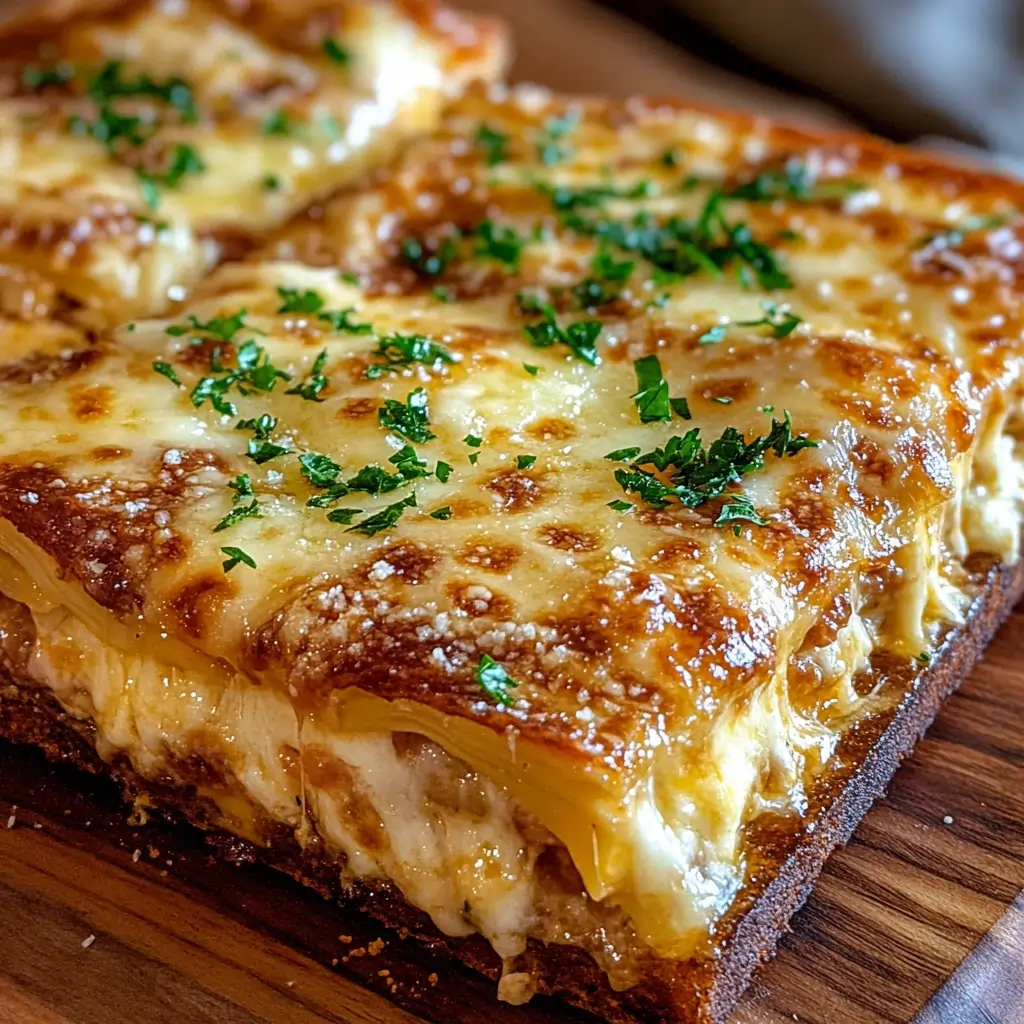

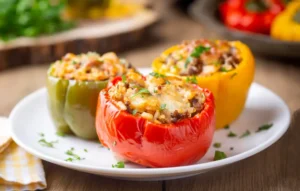
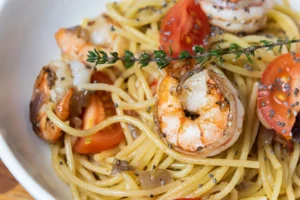
2 thoughts on “Lasagne Garlic Bread: Recipe, Tips & Serving Ideas”